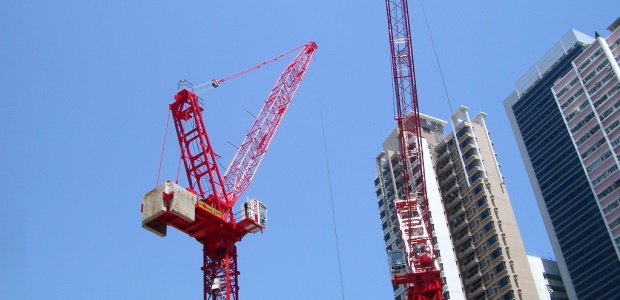
HSE Acts After Three Tower Cranes Collapse
Some tower crane users have not been releasing the slew brake and/or placing the jib at the correct out of service radius, according to the agency.
After three luffing jib tower cranes collapsed recently in high winds, Britain's Health and Safety Executive posted information to remind tower crane users to secure out-of-service cranes. It is supplementary guidance to what is contained in BS7121 Part 5:2006, Code of practice for safe use of cranes -Tower cranes.
When these cranes are unattended, they "must be in free slew with the jib at a safe out-of- service radius," it states.
Some tower crane users have not been releasing the slew brake and/or placing the jib at the correct out of service radius, however. "If luffing jib cranes are left out of service with the slew brake engaged and/or the jib parked at too small a radius, there is a possibility the crane may not be able to weathervane freely in high winds. This could result in very high loadings being placed on the crane with the consequential collapse of the jib or the whole crane," according to the agency.
It reminded users to:
- Ensure they have the most accurate, up-to-date information for the specific crane they are operating by discussions or correspondence with the supplier or manufacturer because some manufacturers have recently changed their guidance
- Check that the information includes the correct minimum out-of-service radius for the specific crane they are operating with the supplier or manufacturer
- Check both after erection, and periodically in service, the function of the device that releases the slew brake and places the crane in free slew
- Also check the condition of the slew drive motors, gearboxes, and slew ring bearing to ensure they have not deteriorated
- Ensure that operators have been provided with instructions on how the crane should be placed in free slew and the correct radius at which the jib should be positioned when leaving the crane unattended
- Make periodic checks that the buildings under construction and other cranes are not preventing the crane from free slewing, including both front jibs and rear counter jibs
For Construction Plant Hire Association guidance, visit this site.